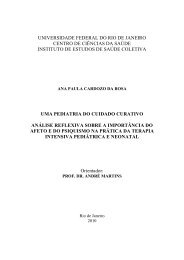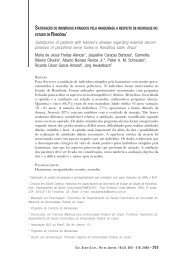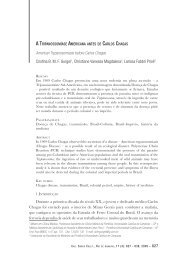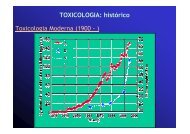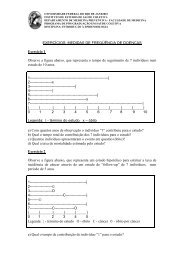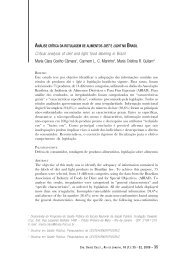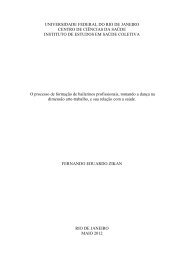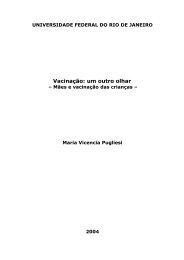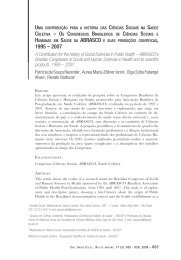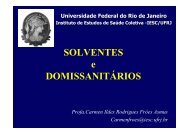Passive smoking and atherosclerosis - IESC/UFRJ
Passive smoking and atherosclerosis - IESC/UFRJ
Passive smoking and atherosclerosis - IESC/UFRJ
Create successful ePaper yourself
Turn your PDF publications into a flip-book with our unique Google optimized e-Paper software.
The concern that environmental tobacco exposure may be related to <strong>atherosclerosis</strong><br />
was a logical outgrowth of the role of active <strong>smoking</strong>, <strong>and</strong> has been explored in numerous<br />
studies. Glantz & Parmley (Circulation 1991;83:1-12) showed that, of ten published studies<br />
conducted both in the U.S. <strong>and</strong> abroad (Japan, Scotl<strong>and</strong>, China), only one (by Lee et al) did not<br />
yield a relative risk greater than 1.0 using clinical coronary heart disease death as an outcome<br />
(Figure 2).<br />
(4) Does the outcome used in these studies (mortality) allow firm conclusions on<br />
whether the association of environmental tobacco smoke with coronary heart<br />
disease risk is causal? Why?<br />
(5) Which causality criterion is met by the demonstration that all but one study<br />
showed a positive association between environmental tobacco smoke <strong>and</strong> death?<br />
(6) When conducting a review of the literature such as that reported by Glantz <strong>and</strong><br />
Parmley, what possible bias may interfere with the interpretation of this causality<br />
criterion? Are there situations when this criterion is not met, <strong>and</strong> yet the<br />
association is still causal? What are these situations?<br />
Wells (Environ Int 1988;14:249-65) estimated a pooled risk of coronary heart disease<br />
death in persons exposed to environmental tobacco smoke relative to that in those not exposed<br />
of 1.3 (95% confidence interval, 1.1-1.6) for men <strong>and</strong> 1.2 (95% confidence interval, 1.0 – 1.4) for<br />
women. These estimates are consistent with those arrived at by Glantz & Palmer of 1.3 for both<br />
genders (95% confidence interval 1.2 – 1.4), <strong>and</strong> have been confirmed by the 2006 report of the<br />
Surgeon General.<br />
(7) A relative risk close to one is often referred to as a “small effect”. Is that<br />
statement always true? Why?<br />
Using a relative risk estimate of 1.2 <strong>and</strong> an environmental tobacco smoke<br />
prevalence of approximately 26% (Howard et al, Arch Intern Med<br />
1994;154:1277-82), estimate the percentage of total clinical coronary deaths due<br />
to environmental tobacco <strong>smoking</strong> in women.<br />
E8-3




